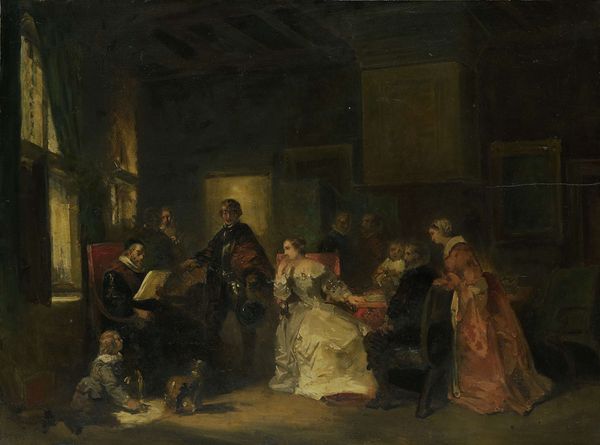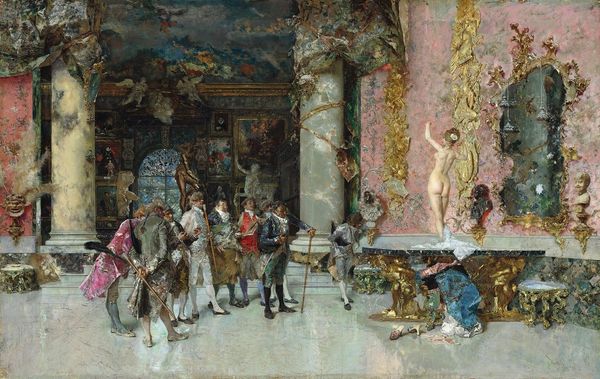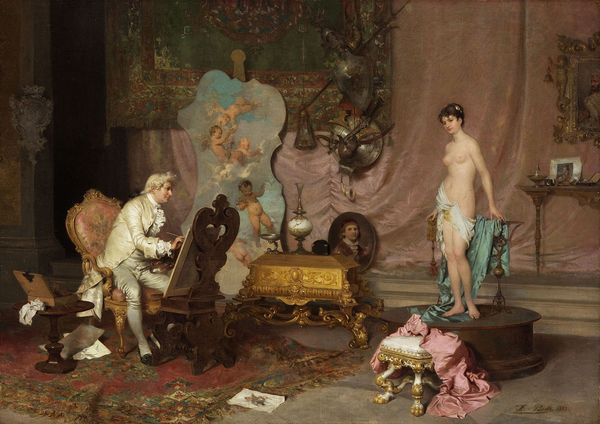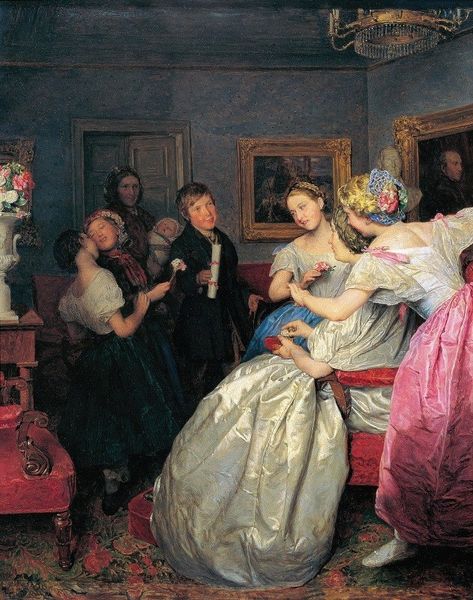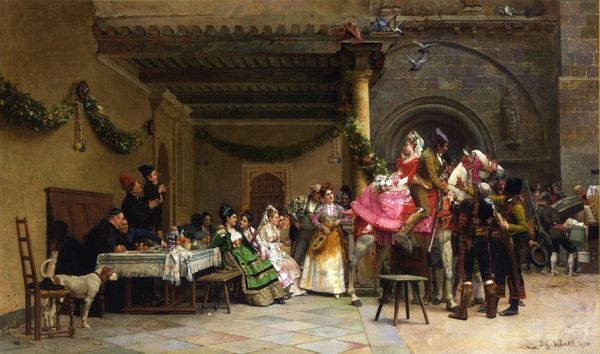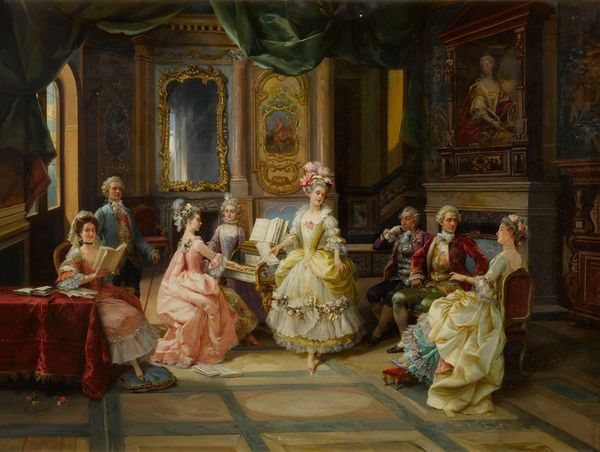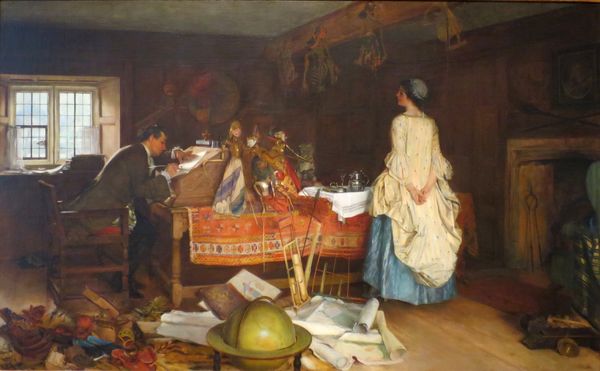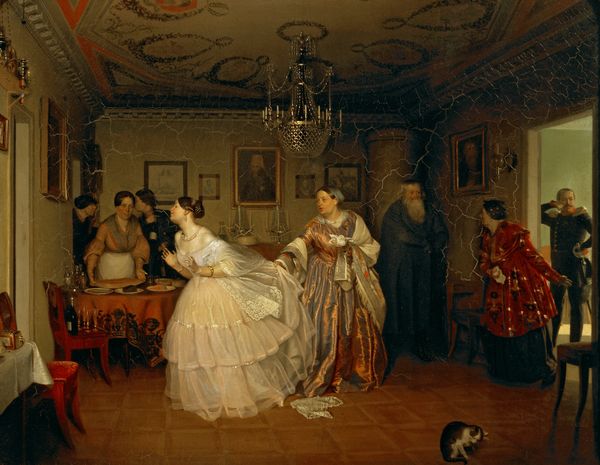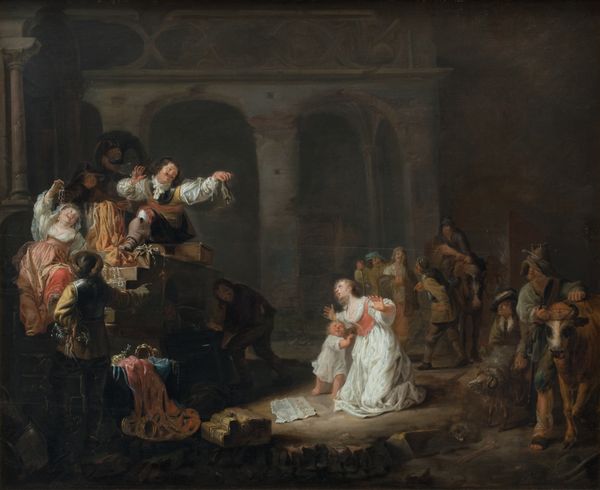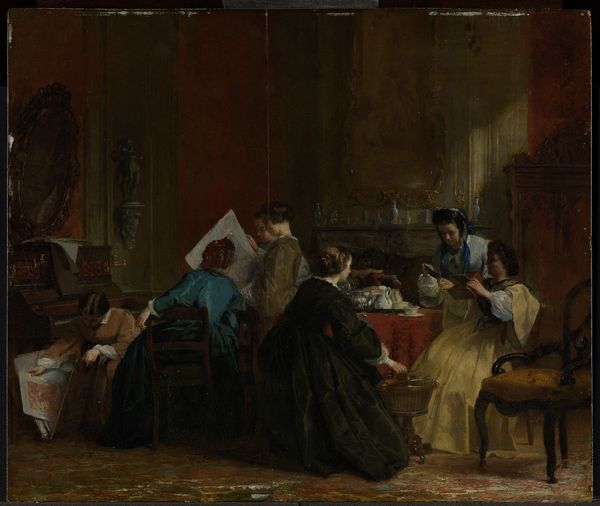
Copyright: Public Domain: Artvee
Mariano Fortuny Marsal painted "The Spanish Wedding" with oil on panel. The painting is dominated by a warm, dark palette, creating a sense of intimate enclosure. The texture is rich, with visible brushstrokes that give the scene a vibrant, almost shimmering quality, particularly noticeable in the elaborate costumes. Formally, the composition is divided into distinct areas. The left side of the painting with the figures signing a document offers a somewhat serious tone which is offset by the festive chaos of the wedding party in the middle and right. These stylistic contrasts, combined with the opulent interior, point to the social and cultural complexities of 19th-century Spain. The artist seems to be making a point about a culture caught between tradition and modernity. In closing, note how Fortuny's manipulation of light and texture destabilizes the conventional, creating a space where traditional values meet a more progressive aesthetic sensibility, challenging us to reconsider the fixed meanings of ceremony and celebration.
Comments
artera over 1 year ago
⋮
Mariano Fortuny y Carbó (1838-74) was probably the most important Catalan painter of the nineteenth century, and enjoyed great international prestige in his lifetime. He was awarded a residency in Rome in 1857 and was subsequently sent to North Africa by the Barcelona Provincial Council to make sketches from life of the Hispano-Moroccan war. The impact of the light and vibrant colors of Morocco can be seen in many of his later works. By 1866, he had become interested in painting eighteenth-century interiors. Exceptionally skilled and an outstanding colorist, when Fortuny painted La Vicaria (The Spanish Wedding) it met with great acclaim from both critics and the public, helping his rise to fame and commercial success. Although he had painted this subject before, La Vicaria became one of his masterpieces. It depicts the moment at which the witnesses of an eighteenth-century Spanish wedding sign the marriage certificate in the sacristy of a magnificent church, while the wedding guests are waiting. The style, composition, and color of the work point to the influence of Francisco de Goya on the Catalan artist. The painting highlights Fortuny's appreciation of the idiosyncracies of individual people. He fills the canvas with numerous quaint characters, including a bullfighter, a naval officer, a clergyman, an old woman, and a smattering of fashionable ladies. His love of detail was instinctive and this gave him every opportunity to display his artistic dexterity and luscious sense of color.
Join the conversation
Join millions of artists and users on Artera today and experience the ultimate creative platform.
